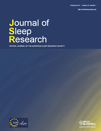Information content in cortical spike trains during brain state transitions
Summary
Even in the absence of external stimuli there is ongoing activity in the cerebral cortex as a result of recurrent connectivity. This paper attempts to characterize one aspect of this ongoing activity by examining how the information content carried by specific neurons varies as a function of brain state. We recorded from rats chronically implanted with tetrodes in the primary visual cortex during awake and sleep periods. Electro-encephalogram and spike trains were recorded during 30-min periods, and 2–4 neuronal spikes were isolated per tetrode off-line. All the activity included in the analysis was spontaneous, being recorded from the visual cortex in the absence of visual stimuli. The brain state was determined through a combination of behavior evaluation, electroencephalogram and electromyogram analysis. Information in the spike trains was determined by using Lempel–Ziv Complexity. Complexity was used to estimate the entropy of neural discharges and thus the information content (Amigóet al. Neural Comput., 2004, 16: 717–736). The information content in spike trains (range 4–70 bits s−1) was evaluated during different brain states and particularly during the transition periods. Transitions toward states of deeper sleep coincided with a decrease of information, while transitions to the awake state resulted in an increase in information. Changes in both directions were of the same magnitude, about 30%. Information in spike trains showed a high temporal correlation between neurons, reinforcing the idea of the impact of the brain state in the information content of spike trains.




